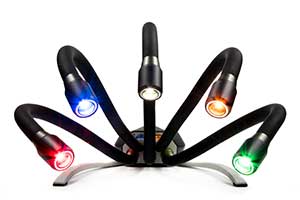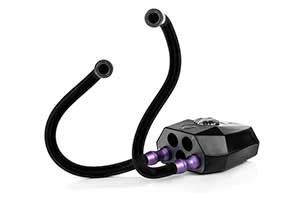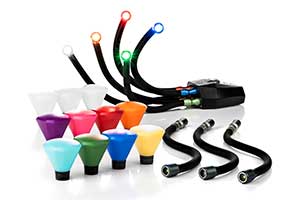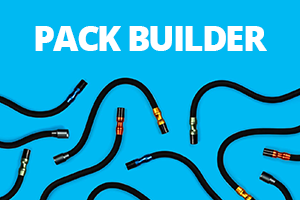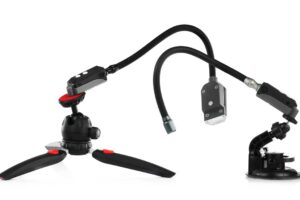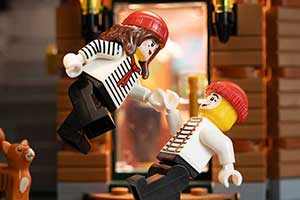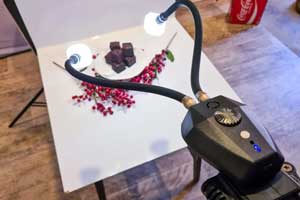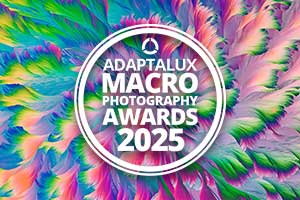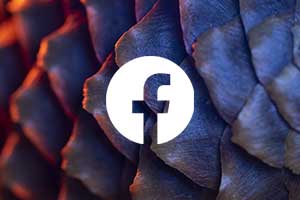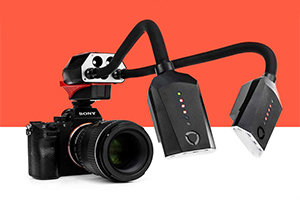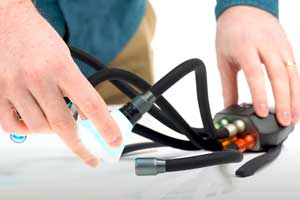Fabric Macro Photography: Explore the Hidden Textures in Everyday Materials – Watch on YouTube
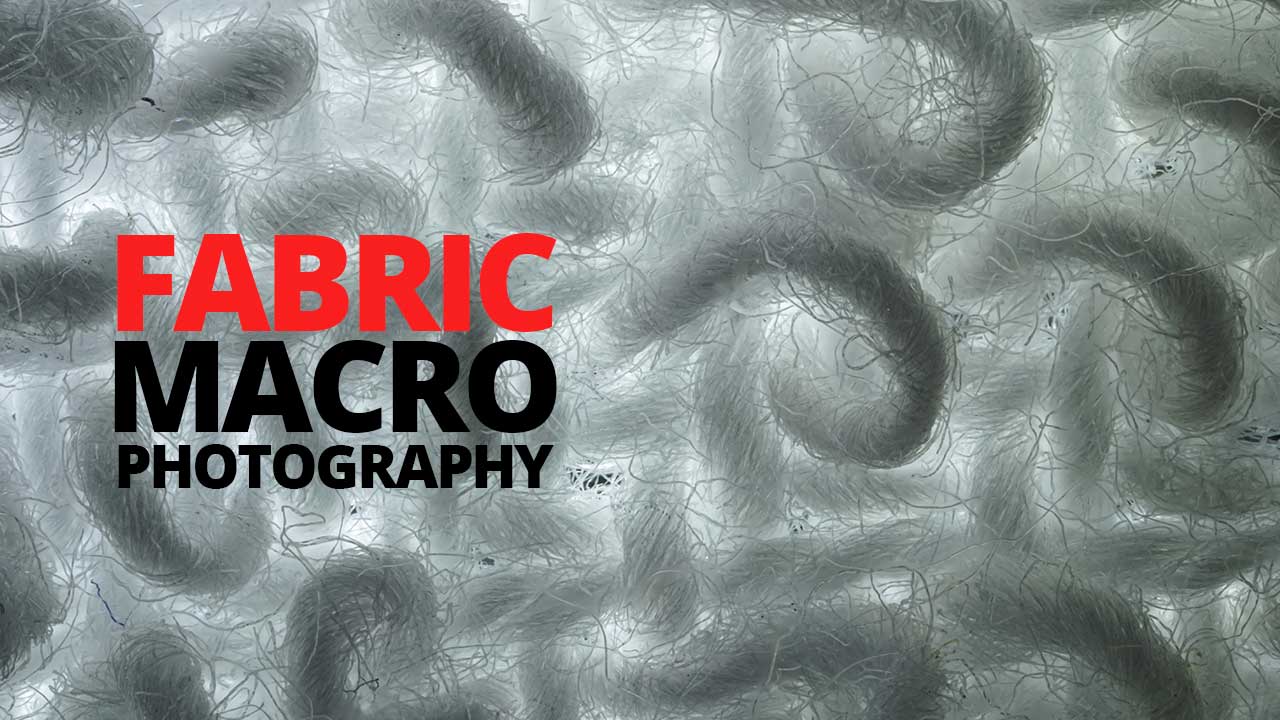
If you’re looking for a fun and creative macro photography project, fabric is a great subject to explore. It’s easy to find at home, full of unique textures, and looks incredible up close. In this tutorial, we’ll walk through how to capture amazing fabric macro photography using a macro lens and lighting from Adaptalux.
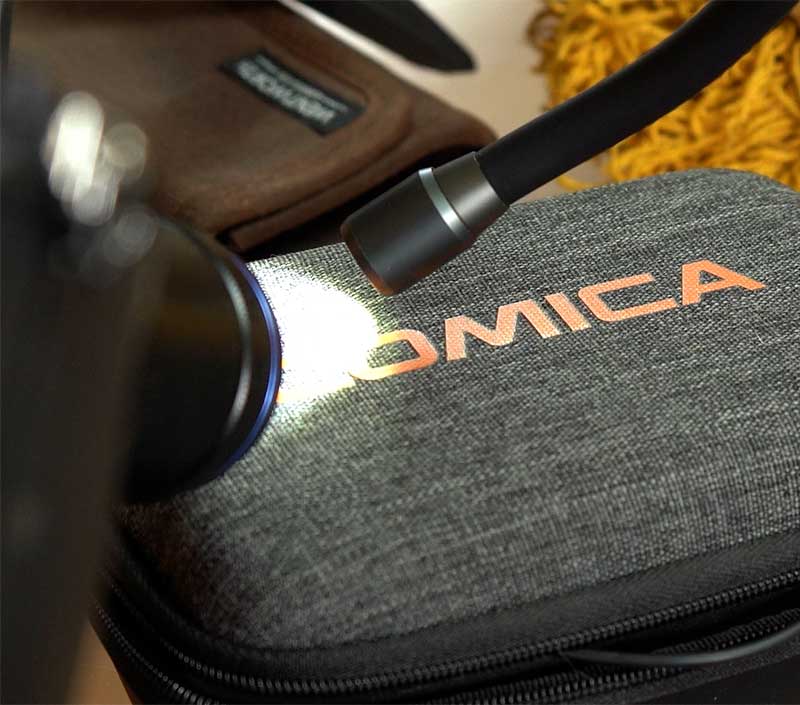

Getting Started with Fabric Macro Photography
Fabric might seem simple at first, but under high magnification, it becomes surprisingly complex. The fibres, weaves, and tiny imperfections reveal a whole new world of detail.
You don’t need much to begin. Just grab a macro lens capable of 1:1 magnification or more. We used a 2.5x to 5x macro lens fro Laowa, which allows for extremely close shots. The closer you can get, the more detail you’ll uncover in the fabric fibres.
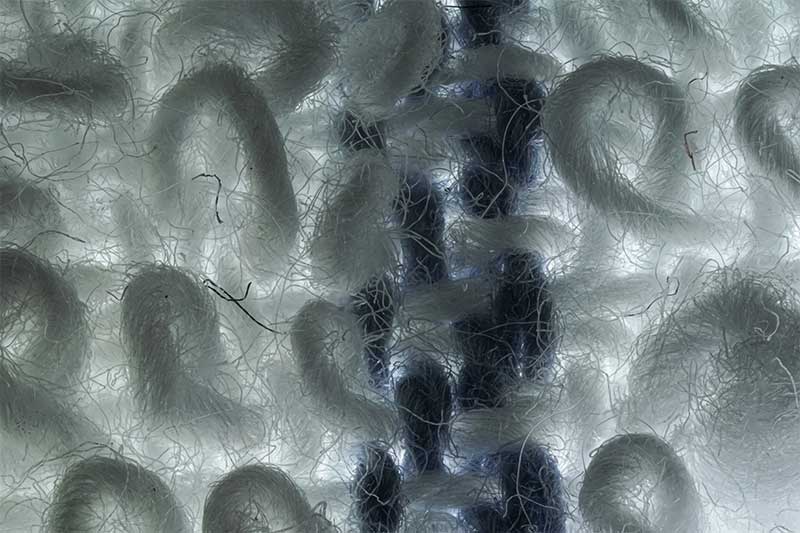
Lighting is key for macro photography. Natural room lighting usually isn’t enough when you’re shooting this close. Without proper lighting, you’ll end up using high ISO settings, which results in grainy images. This is where the Adaptalux Studio lighting system really shines.
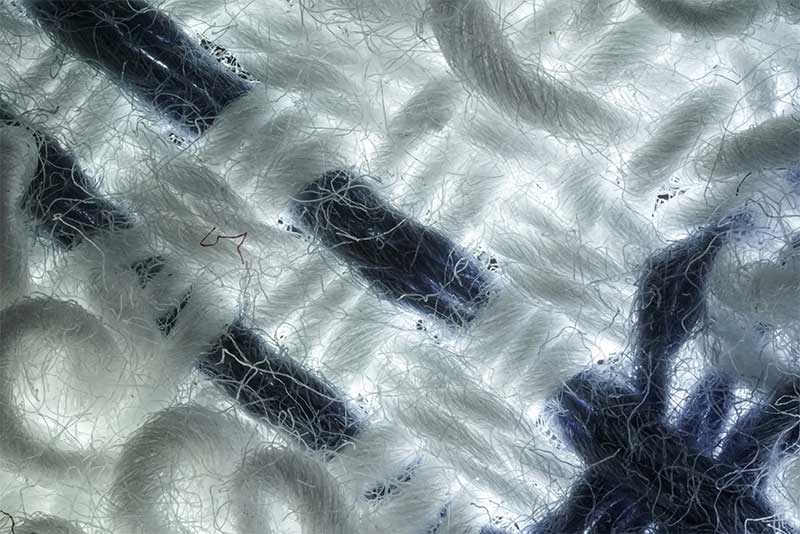
Why Lighting Matters
When working at such close distances, even small lighting changes can have a big impact. Shadows are easy to cast, and fine control is essential. The Adaptalux Studio provides many ways to position your lights and control the brightness, letting you position your lights exactly where you need them.
This kind of lighting is perfect for fabric macro photography. You can light from the side to enhance textures or even shine light through thin fabrics for a backlit effect. Coloured lighting is also an option if you want to get creative with mood and tone.
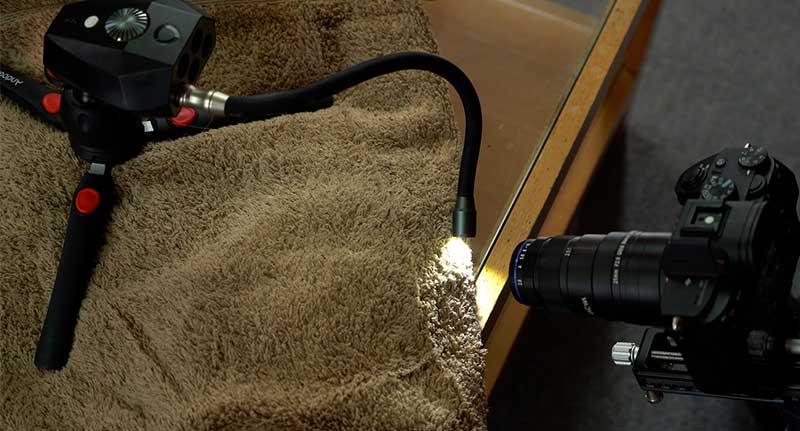
Choosing Fabrics to Shoot
For this tutorial, a few different fabrics were used. A thick towel, a textured blanket, a woven dishcloth, and some fabric-covered boxes and cases. Each one has its own texture and weave pattern that changes drastically depending on how it’s lit and magnified.
The towel is a great starting point. Its thick weave made it easy to capture details at lower magnification. As the lens zooms closer, individual fibres and even cat hairs became visible. Using directional lighting helped bring out those textures, casting shadows and revealing depth.
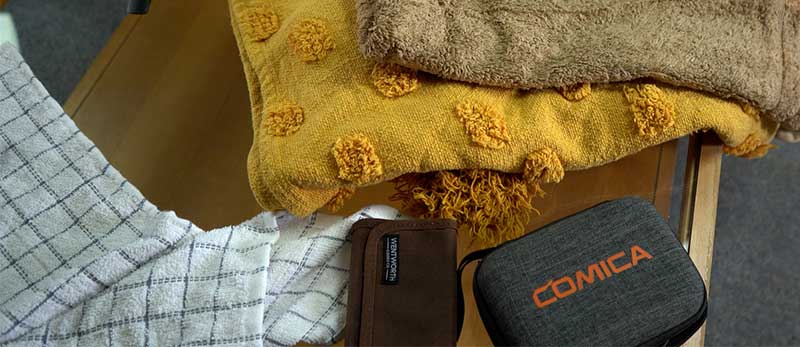
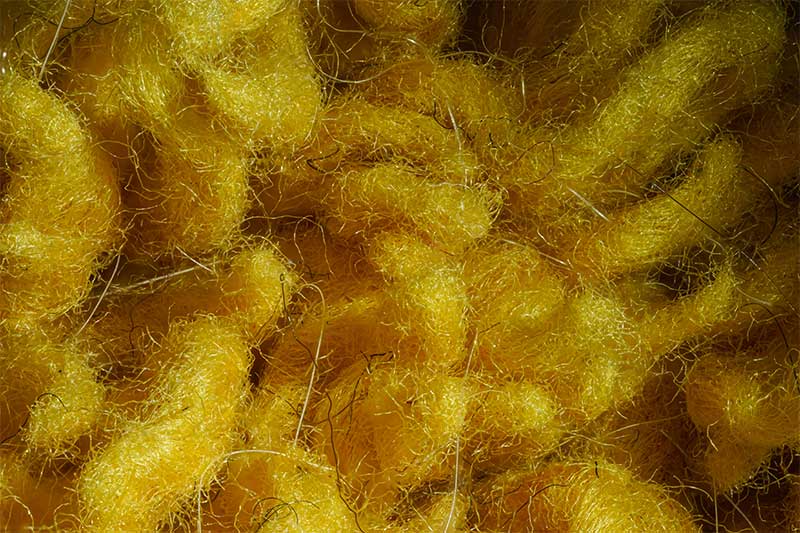
Advanced Techniques: Focus Stacking
To capture more detail across the depth of the fabric, you can use focus stacking. This involves taking multiple shots at different focus points and blending them into one image. It’s especially useful in macro photography where depth of field is extremely shallow.
Focus stacking isn’t essential, but it can help create images with more clarity throughout the frame. Just be aware that complex textures like fabric can sometimes confuse stacking software, leading to small errors or artefacts.
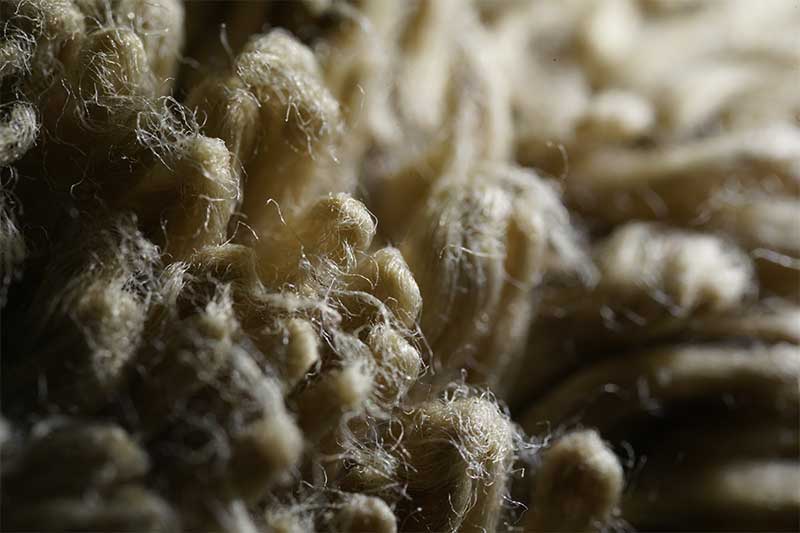

Trying Backlighting for a Unique Look
One of the most interesting lighting techniques is backlighting. A thin dishcloth placed on a glass surface with a Pod Mini light shining up through it reveals not just the weave of the fabric but also the individual loops and shadows created by the threads.
This simple trick – lighting the subject from below instead of above – creates a completely different look. It’s a great way to experiment and find unique compositions within everyday objects.
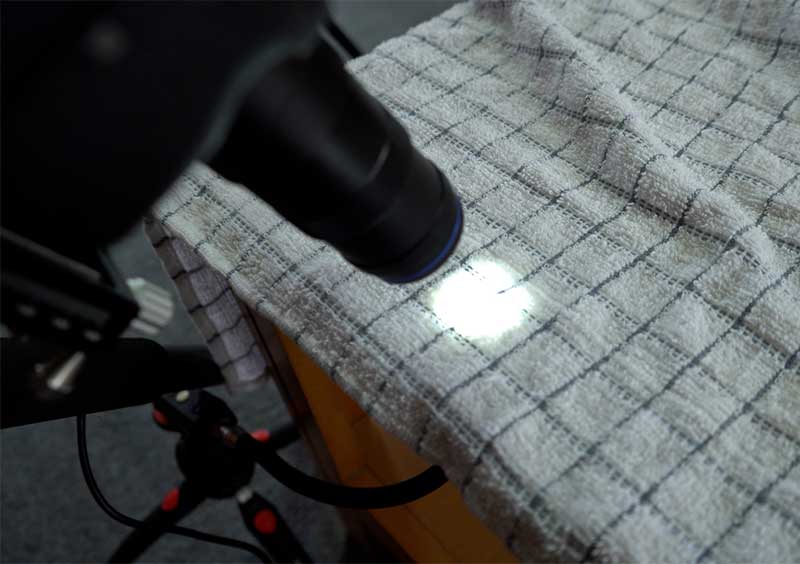
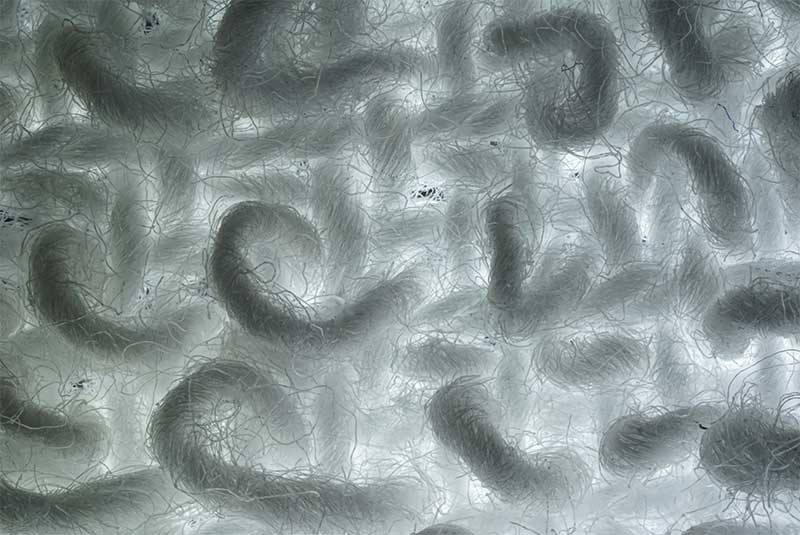
Fabric macro photography is easy to try at home and offers endless variety. Whether you’re shooting thick towels, delicate dishcloths, or synthetic materials like gear cases, there’s always something interesting to discover. Using a dedicated macro lighting system like Adaptalux Studio can make a huge difference in the quality of your shots.
Remember to subscribe to our YouTube channel for regular macro photography tutorials, ideas and inspiration.
- Abstract Water Macro Photography – Creative Photography in the river! - 30th November 2025
- Creating Fantasy Mushroom Scenes with LED Macro Lighting - 16th November 2025
- How to Achieve Consistent Macro Lighting Outdoors - 26th October 2025

